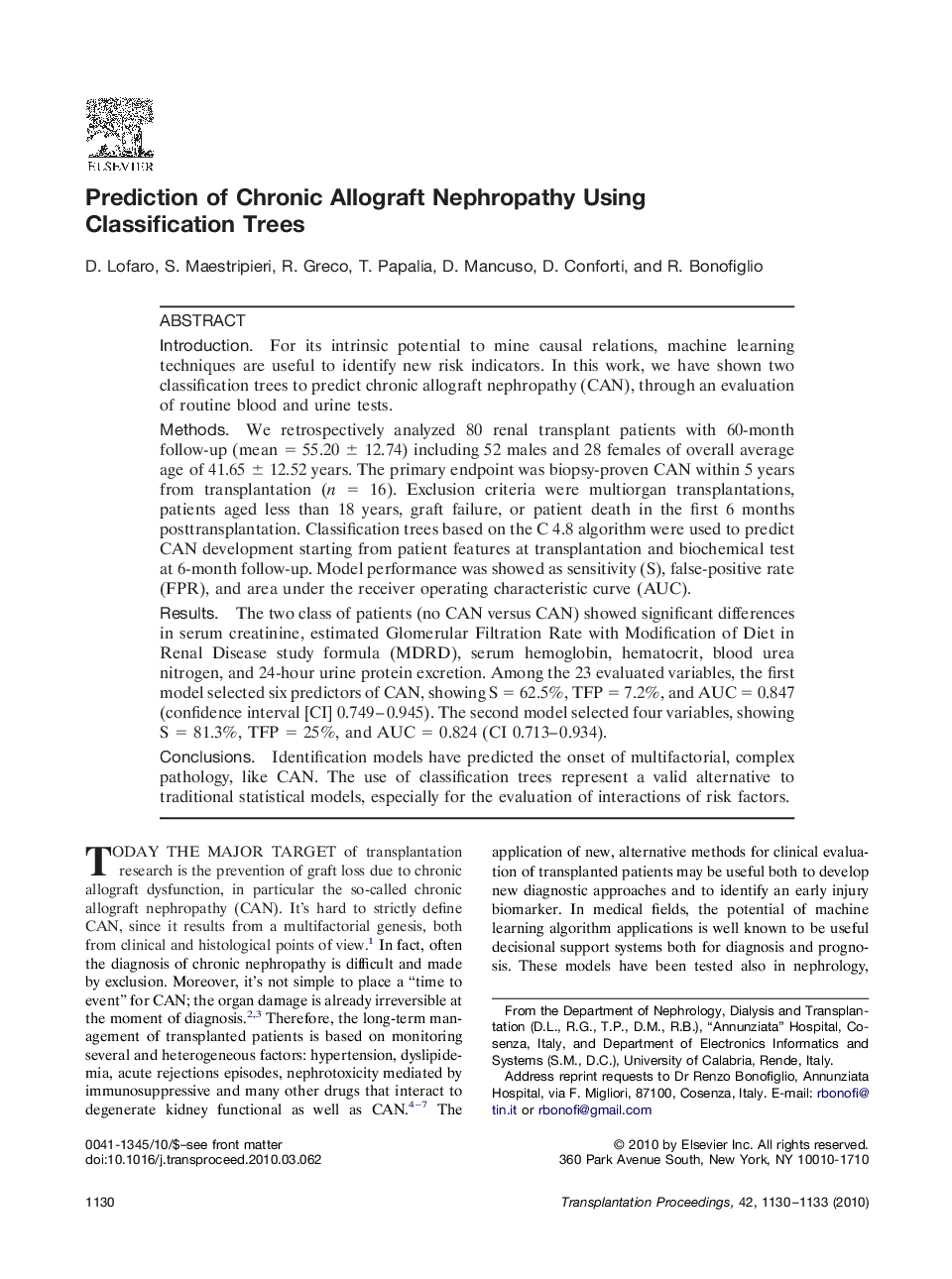| کد مقاله | کد نشریه | سال انتشار | مقاله انگلیسی | نسخه تمام متن |
|---|---|---|---|---|
| 4259608 | 1284574 | 2010 | 4 صفحه PDF | دانلود رایگان |

IntroductionFor its intrinsic potential to mine causal relations, machine learning techniques are useful to identify new risk indicators. In this work, we have shown two classification trees to predict chronic allograft nephropathy (CAN), through an evaluation of routine blood and urine tests.MethodsWe retrospectively analyzed 80 renal transplant patients with 60-month follow-up (mean = 55.20 ± 12.74) including 52 males and 28 females of overall average age of 41.65 ± 12.52 years. The primary endpoint was biopsy-proven CAN within 5 years from transplantation (n = 16). Exclusion criteria were multiorgan transplantations, patients aged less than 18 years, graft failure, or patient death in the first 6 months posttransplantation. Classification trees based on the C 4.8 algorithm were used to predict CAN development starting from patient features at transplantation and biochemical test at 6-month follow-up. Model performance was showed as sensitivity (S), false-positive rate (FPR), and area under the receiver operating characteristic curve (AUC).ResultsThe two class of patients (no CAN versus CAN) showed significant differences in serum creatinine, estimated Glomerular Filtration Rate with Modification of Diet in Renal Disease study formula (MDRD), serum hemoglobin, hematocrit, blood urea nitrogen, and 24-hour urine protein excretion. Among the 23 evaluated variables, the first model selected six predictors of CAN, showing S = 62.5%, TFP = 7.2%, and AUC = 0.847 (confidence interval [CI] 0.749–0.945). The second model selected four variables, showing S = 81.3%, TFP = 25%, and AUC = 0.824 (CI 0.713–0.934).ConclusionsIdentification models have predicted the onset of multifactorial, complex pathology, like CAN. The use of classification trees represent a valid alternative to traditional statistical models, especially for the evaluation of interactions of risk factors.
Journal: Transplantation Proceedings - Volume 42, Issue 4, May 2010, Pages 1130–1133